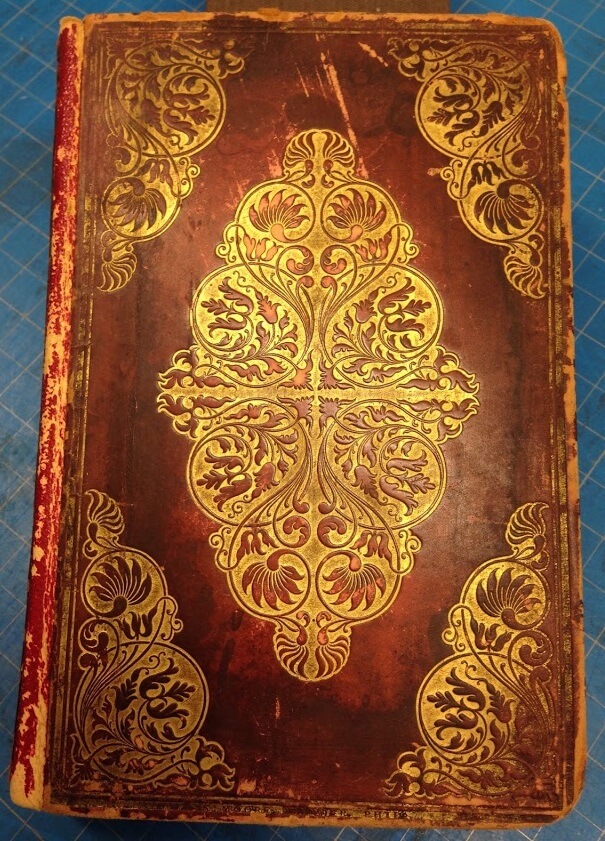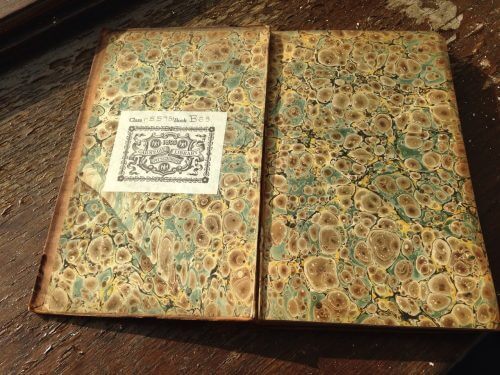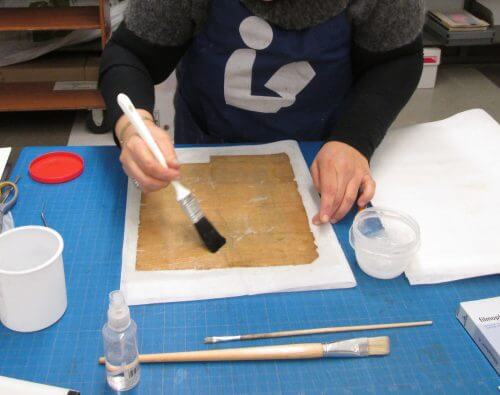In the Conservation, Preservation & Access Department, we work with beautiful, old books all day long. We carefully mend their broken parts, clean off the years of soot that has collected on them while they sat in the stacks—soot from long before air conditioning and the library’s windows were open to the steel mills and smog. We make custom boxes for these books to live in. The boxes protect them from the damaging elements of light, moisture and air pollution; all of the things that have potential to harm our beloved books.
Our preservation lab sits on the 3rd floor of the Main Library, tucked away in the attic. Formed in 2007, the mission of the Conservation, Preservation & Access Department (CP&A) is to ensure long-term access to the Library’s reference and special collections. A central focus of CP&A is to repair, maintain and catalog the Heritage collection located in the Carnegie Library Depository at the East Liberty branch.
In the CP&A Department, we are delighted daily by the craftsmanship and the intricate details of the art of bookbinding. But all these delights have been confined to our little attic lab. So how can we share them with you, our patrons? Recently, CP&A applied for and was awarded a 2016 Innovation Grant with the goal to create an online and in-person exhibit that shares some elements of historic bookbinding found in CLP’s collection.

Exhibits will include images of books, showcasing characteristics of historic bookbinding, and the vocabulary terms used to describe each element of this craft. Finally, we’d love to allow patrons to find the delights that we experience every day in the preservation lab working with these items. Whether it’s a tiny binder’s ticket, describing a bindery in Pittsburgh that no longer exists or watery/trippy marbled papers akin to 1960s artwork, our goal is to share all of these little components of the beautiful, old books that we work with every day to repair, preserve and improve access to. As preservation professionals, it is our mission not only to preserve the content of a book, but also to preserve the container that content is bound within, providing context to the whole object, for generations to come.
The old ailing books are the patients, and the CP&A department staff are the medics. Much of our time is spent working at a bench, much like a wood shop work bench. We use hand tools, such as bone folders, tweezers, glue and solvents. It’s a divine mix involving components of both chemistry and studio art. Combined, the preservation staff has over 40 years of experience working in library preservation. And just like in the field of medicine, where a medical professional uses a specific vocabulary to diagnose their patients, the same applies to the field of preservation.
We thought it might be fun to share all of this quirky terminology used to describe the wonders of the book with you, as a small sample of what you might see the next time you come to the Library.

The books we work with are mostly from the 18th, 19th and 20th centuries. Some have been bound by hand, while some are machine-made. Included in this collection are biographies, newspapers, journals, directories, oversize maps and art folios. Researchers use this collection because many of our holdings are one of a kind, and showcase the unique history, culture and industry of our region as it emerged as the center of iron and steel production.
When a broken book comes into our lab, we assess its condition. We all need to use the same vocabulary to be able to talk about the book, what is broken and how to repair it. For example, the back of the book’s body is called the spine, just like the backbone of a human body. If the back of the book is loose, it needs a spine repair. The pages of a book are referred to as the text block. Often, in 18th and 19th century books, you may find papers on the inside front cover that are elaborate swirls of color. These papers were made by hand, floating colored pigments on water, swirling the pigments together with a giant comb to make different patterns, and then dipping a piece of paper in the water to pick up the pattern. This process is called marbling and the papers are referred to as marbled end sheets.
We are currently selecting books that are “hidden” in the stacks and bringing those books forward to public spaces in the Library, increasing their chance of our patrons getting a glimpse of them. Stay tuned for updates on this project in early 2017!
The Conservation, Preservation & Access Department of Carnegie Library of Main is a small professional staff consisting of our Director Jackie Mignogna, Cataloger Janet Templer, Conservator Amy Williams, Preservation Librarian Tara Walsh and Conservation Technician Emma Meetz. Together, we make sure researchers, scholars and history buffs have access to functional primary resources.

